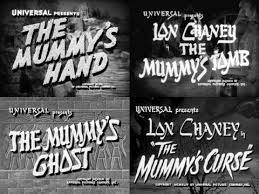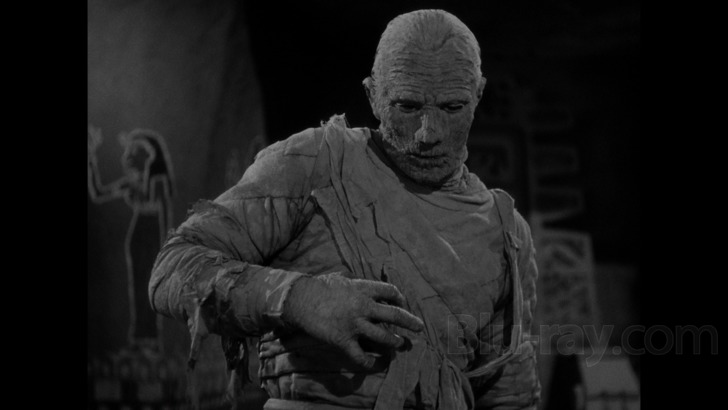The Mummy’s Hand (1940)
IMDb meta-data is 1 hour and 7 minutes, rated 6.1/10.0 by 3170 cinematizens.
Genre: comedy, horror (like much of life, an odd combination)
Verdict: Clichés along the Nile.


While The Mummy (1932) is a subtle romantic film about love across the millennia with the title figure in only one scene, The Mummy’s Hand is the film that spawned all the clichés that have followed in The Mummy’s Tomb (1942), The Mummy’s Ghost (1944), The Mummy’s Curse (1944), The Mummy’s Homework (1955)….. and which are still repeated in re-makes. A title search on IMDb yields 200 title hits.

In this outing the mummy stumbles around at treacle pace like a concussed NFL lineman, trailing bandages with the use of only one arm, and that hand. His victims have to lie quietly while he sets upon them, and per the director’s orders they do, one after another.
To begin at the beginning, in Cairo two down-and-out Yankees come across a clue to a rich tomb — X marks the spot! — and set out to pillage it in the American way. Locals demur but lack the dosh to recruit the Magnificent Seven. Instead they turn to the curator at the local museum, George ‘Shiver’ Zucco, whose paladin is the titular escaped anatomy school specimen who lumbers around. So mysterious are the Tanna leaves which sustain Lumber that Wikipedia says they are fictional. Ha! False fact! They are as real as anything the president in thief says.
While the plot starts out like The Treasure of the Sierra Madres (1948), it lacks the soul of that memorable film. This one is played for laughs. Cecil Kellaway appears with a peppery daughter to add to the fun, and they sure do. Square Jaw is accompanied by the breezy Wallace Ford, whose mugging steals a few scenes but Kellaway holds his own and Marta, the daughter, makes an impressive entrance with six gun in hand. These four set off across the desert. These are the Tomb Raiders heading for Tombstone!
For what facts are worth these days, this film does not continue the storyline of The Mummy and ergo is not a sequel though it is routinely called that by those who uphold the contemporary standards of journalism.

